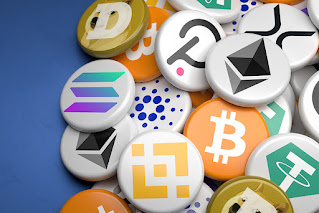Solana Opens Doors to Ethereum Developers with Neon EVM Integration.
By Laurie Suarez www.crypto101bylauriesuarez.com
Solana, a high-performance blockchain platform known for its scalability and speed, has recently made a significant move to attract developers from the Ethereum ecosystem. The integration of Neon EVM (Ethereum Virtual Machine) into the Solana network allows Ethereum developers to seamlessly port their decentralized applications (dApps) and smart contracts to Solana. This article explores the implications of this integration, the benefits it offers to developers, and the potential impact on the broader blockchain landscape.
Background: Solana's Scalability Advantage
Solana has gained recognition in the blockchain industry for its impressive scalability and throughput capabilities. With its unique architecture, Solana can process thousands of transactions per second, making it a desirable platform for applications requiring high-speed transaction processing. However, Solana's challenge has been attracting developers who are already entrenched in the Ethereum ecosystem due to its vast network effects and established developer community.
The Integration of Neon EVM
To bridge the gap between Solana and Ethereum, the integration of Neon EVM into the Solana network has opened doors for Ethereum developers to leverage Solana's scalability without sacrificing compatibility with Ethereum-based applications. Neon EVM allows developers to run existing Ethereum smart contracts and dApps on Solana with minimal modifications. This integration offers several key benefits:
Improved Scalability: By running Ethereum applications on Solana, developers can harness Solana's scalability advantages, benefiting from its high transaction throughput and reduced transaction fees. This scalability boost addresses one of the major pain points experienced by Ethereum developers, who often face network congestion and high gas fees.
Enhanced Performance: Solana's fast confirmation times and low latency make it an attractive platform for developers seeking near real-time transaction finality. By leveraging Solana's capabilities, developers can create applications that require instant settlement and responsiveness.
Lower Transaction Costs: The integration with Solana allows developers to benefit from lower transaction fees compared to Ethereum's congested network. This cost reduction can have a significant impact on the economic feasibility of dApps and smart contracts, making them more accessible and appealing to users.
Access to Solana's Ecosystem: With the integration, Ethereum developers gain access to Solana's vibrant and growing ecosystem. This includes a diverse range of decentralized finance (DeFi) protocols, NFT platforms, and other innovative projects that have emerged on Solana. The collaborative environment can foster new partnerships and opportunities for developers to explore.
Impact on the Blockchain Landscape
The integration of Neon EVM into Solana holds several implications for the broader blockchain landscape:
Competition for Ethereum: Solana's integration with Neon EVM presents a formidable competitor to Ethereum, particularly in terms of scalability and transaction speed. It offers Ethereum developers an alternative platform that addresses some of the scalability limitations of the Ethereum network. This competition may drive further innovation and improvements in both platforms as they vie for developer mindshare.
Interoperability and Cross-Chain Collaboration: The integration showcases the growing trend of interoperability and cross-chain collaboration within the blockchain space. It demonstrates that blockchain platforms can coexist and collaborate to provide developers with more choices and opportunities. This cross-chain integration can foster innovation and accelerate the maturation of the entire blockchain ecosystem.
Developer Adoption: The integration is likely to attract Ethereum developers who have been seeking alternative platforms with improved scalability. Solana's performance and compatibility can entice developers to explore new possibilities beyond the limitations of the Ethereum network. This influx of developers could contribute to the growth of the Solana ecosystem and foster a vibrant community of developers and users.
Conclusion
The integration of Neon EVM into the Solana network marks a significant step towards attracting Ethereum developers to leverage Solana's scalability advantages. By offering seamless compatibility with Ethereum applications, Solana opens doors for developers seeking improved scalability, enhanced performance, and lower transaction costs. This integration also fosters competition, interoperability, and cross-chain collaboration within the blockchain landscape. As more Ethereum developers explore Solana, the stage is set for further innovation, growth, and maturation of the entire blockchain ecosystem.



Comments
Post a Comment